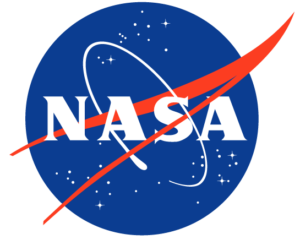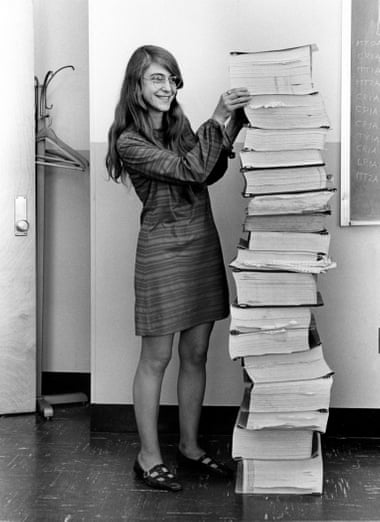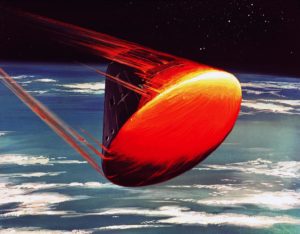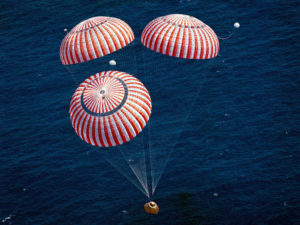The Apollo Program
When President Kennedy stated that the United States would put a man on the Moon before the end of the decade (the sixties), nobody knew how it could be done. Or even if it could be done. But he committed the US to doing it anyway. That was a very important step, that commitment. He was committing the entire nation to that single outcome, knowing full well that it was asking the almost impossible.
NASA rose to the challenge
 NASA then got busy studying how to overcome all the difficulties going to the Moon presented. They knew how to get a man in orbit (it had been done by the Russians, and, more recently, by the Americans themselves, who were by now lagging behind in the space race). But they didn’t know how to get to the Moon, or how to land (not to mention, getting back … that was another major obstacle).
NASA then got busy studying how to overcome all the difficulties going to the Moon presented. They knew how to get a man in orbit (it had been done by the Russians, and, more recently, by the Americans themselves, who were by now lagging behind in the space race). But they didn’t know how to get to the Moon, or how to land (not to mention, getting back … that was another major obstacle).
Within a few years, and after several Apollo missions, they had learned so much that it was possible to attempt the almost impossible. So much of it depended on the careful work of ordinary men and women, tens of thousands of them (hundreds of thousands, actually), not just the astronauts. Women hand-stitched the space suits – every stitch had to be perfect, and they all had to be counted and checked, again and again. The Saturn V space rocket (still the biggest and most powerful ever to be launched) had to be designed right from very first principles, and painstakingly built by thousands of individuals and dozens of companies. If even one part of it failed, it might mean the failure of the entire mission.
Back to basics
They needed a rocket big enough to take them to the Moon. But big is heavy! So they designed the rocket in 3 stages. Each one had its own fuel supply, and when that fuel was spent, the hardware was jettisoned.
Another of their big problems was that they needed a computer small enough to take on board. A ‘small’ computer, at that time, was about the size of three big fridge freezers! Way too big, obviously. Actually they needed two, one for the command module and one for the lunar module. Again, women came to the rescue, specifically in the form of Margaret Hamilton – she was a young wife and mother who became the boss of the software team, the people that designed the computer programs.

That’s a picture of her, over on the right, standing next to some of the mountains of clever coding that made the mission possible.
NASA got their small computers (not so very small actually – they weighed about 70 pounds), but their power was extremely basic. A modern car or smart phone has more computing power than Apollo 11 had! But really clever programmers like Margaret Hamilton designed software that would somehow enable them to get to the Moon and back … and they never failed or developed a bug, not once in all the Apollo missions. And the programs had to be literally hand-stitched into them, in what became the forerunner of the integrated circuit (yeah, I know, sounds totally weird, but apparently it’s 100% true).
No computer, not then and not now, could plan every step needed to get to the Moon. It’s just too far and way too complicated to deal with in one go. So they basically just aimed in the right direction and every so often the computer would work out how far they were off-course and it would tell them how much to adjust their direction … a degree or two this way or that. These continual course corrections ensured that they stayed on course. This is hugely simplified, of course … I’m not a space scientist so I don’t know the exact details.
 Even when they got safely back to Earth, the command module had to be protected by heat shields, otherwise it would have burnt to a crisp as it barrelled its way at high speed into the atmosphere. And it had to be slowed right down by huge parachutes, otherwise it would have ploughed into the sea at an unsurvivable speed. It was so important that the parachutes did the job properly that all the separate pieces that went to make them up were very carefully hand-stitched (by women!) and hand- packed.
Even when they got safely back to Earth, the command module had to be protected by heat shields, otherwise it would have burnt to a crisp as it barrelled its way at high speed into the atmosphere. And it had to be slowed right down by huge parachutes, otherwise it would have ploughed into the sea at an unsurvivable speed. It was so important that the parachutes did the job properly that all the separate pieces that went to make them up were very carefully hand-stitched (by women!) and hand- packed.
 They had to be very carefully folded and packed in such a way that they would open correctly to make sure the command module hit the water gently, otherwise the astronauts, after a so-far successful mission, would have died when the module hit the water. It would have been like crashing into concrete at high speed.
They had to be very carefully folded and packed in such a way that they would open correctly to make sure the command module hit the water gently, otherwise the astronauts, after a so-far successful mission, would have died when the module hit the water. It would have been like crashing into concrete at high speed.
The Apollo 11 mission was successful, and not just in the main way, getting to the Moon and back – it was successful in many smaller ways as well. And the years of work and planning that made it successful produced all kinds of hidden benefits. Things that nobody could ever have predicted.
THERE’S A LOT WE CAN ALL LEARN FROM THE APOLLO 11 MISSION
Commitment
Sometimes, when you want to do something difficult, it can seem literally impossible. Think about it very carefully. If it’s really important to you, and it seems like it might even be possible, then commit to doing it, no matter what. Make that commitment … and amazing things start to happen.

Sorry ... MEMBERS ONLY!
UNLOCK FOR FULL EXERCESS!EXERCESS is an online community of people who want to seriously improve their health and fitness, both mental and physical.
JOIN FREE TODAY!
… and get complete and unfettered access to an absolute goldmine of valuable information.
Already a member? Sign in!
